The art of learning with pictures
Updated: 2015-06-22 10:19
By Li Yang(China Daily)
|
||||||||
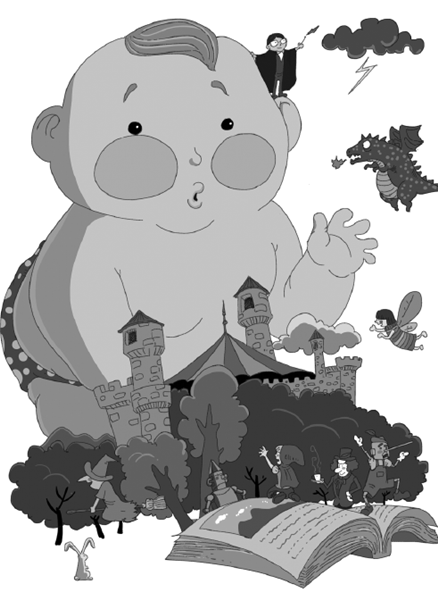 |
|
[Photo by Li Feng/China Daily] |
Illustrated books fast becoming the development tools of choice for children
"Illustration or picture books are much better than iPads for growing-up children, as they help stimulate the child's imagination," said Li Yaming, a 34-year-old mother and a middle-school teacher in Zhuhai, Guangdong province. "But the plethora of choices often makes it difficult for me to choose the best ones."
Li's words find common ground with several Chinese parents. Most of these parents are those who grew up in the 1980s, the golden period for children's illustration books in China, and went on to be parents in what is now an increasingly digital era. The more they are exposed to an information overdrive environment, the more they are eager to keep their children away from it.
Gao Leilei, a 33-year-old mother of two sons, and a civil servant in Beijing believes that the best illustration books for children are often masterpieces created by artists. "The simple use of colors and sketches, accompanied with well-known fairytales and children's stories are probably the best way to stimulate children's minds," she said.
"When I read these stories to my children, I can gauge the curiosity and hunger in their eyes and minds. At times, I feel that I am a tour guide who is leading them into the wonderland created by the illustrated books."
Du Peng, a 35-year-old father and an architect in Jinan, Shandong province is another parent who champions the cause of illustrated books. "The classic illustrations are those that are drawn by hand. They are unique reflections of individual artists' understanding of the children's world, and fundamentally different from the modern cartoons that are made on computerized assembly lines by software," he said.
"I like the pictures in the books and often I feel that I am a part of them," chirps his six-year-old son Du Yefan, as he busily turns the pages of an illustrated book.
Rise of public libraries
Developing illustrations or making picture books for children is becoming one of the most sought after activities at most children-centric events in China, especially after April 23, the World Reading Day, this year.
In line with the growing trend, there has also been a surge of activity. In April this year, a library in Yuncheng, Shanxi province donated about 300 children's illustration books to a local township kindergarten. Not surprisingly the picture books were the main objects of attraction for the children from the rural areas.
Wu Xiangping, the director of the kindergarten, said that the village school does not have too many illustration books. "Our kindergarten operates more like a primary school, and the teachers do not have a strong awareness in developing the children's interest in reading illustration books. We are confident that the new books will help change the concept of kindergarten education."
On May 10, Mother's Day, the municipal government in Zhengzhou, Henan province, established the city's first children's illustration book library in sponsorship with several local enterprises. The library has more than 6,000 children's illustration books and the same would be expanded regularly, said library officials. Children can borrow the illustrated picture books free of cost, they said adding that more than 800 families borrowed books a day after the library's official opening. At a later stage, the library will also add lending services for children in rural areas.
On June 10, a library named Dandelion, jointly funded by the local government and a publishing house, opened its doors at a kindergarten teacher's school in Guiyang, Guizhou province, to promote illustrated book reading. The Dandelion library plans to invite experts and artists to organize salons about children's illustration books, and offer training programs to teach children drawing. These activities would be free and open for all children.
On June 1, Children's Day, the Shanghai government organized more than 200 activity-themed art events centered on fairytales and illustrations for children. The city's children's library launched more than 6,000 new children's illustration books during the occasion. Han Youfang, director of the library, said the illustration book hall is an extension of the classroom and home. "Children can learn drawing skills, and the parents can learn how to tell the stories. They will also meet the artists and painters here," he said. The library has also donated 5,000 illustration books to 1,000 children in villages from nearby Anhui province, an important source of migrant workers for Shanghai.
Teething problems
Wu Fang, the founder of a private children's illustration book library in Xi'an, Shaanxi province, said: "The books not only give children exquisite artistic feeling, but also contain many good stories that help them develop good living habits and a healthy outlook about the world. These cannot be realized with other digital tools." Wu has been running her 60-square meter library for four years, serving about 100 children in her community. Every year, a child reads 150 to 200 child illustration books on average. Some parents donate their illustration books to Wu's library, and the community library, to some extent, is like a platform for sharing books, she said.
Wu said there are about 40 private children's illustration book libraries in Xi'an. Most of them survive on the membership fee, charity donations and the owners' subsidies. She said her motives come from her belief that, "When a nation has children loving reading, the nation has its future assured". She has summed up her thoughts in a poster that is displayed on the wall of the library.
However, statistics show that 80 percent of the children's illustration books in China are those that are imported.
Xiong Lei, a children's literature writer believes that is something that will eventually change. "But for this to happen, it is important for Chinese illustrators to pay more attention to Chinese culture and draw more inspirations from traditional frescoes, paper-cutting, wood carving and shadow puppets. These are all rich resources that can help China transition from an importer to an exporter of children's illustration books."
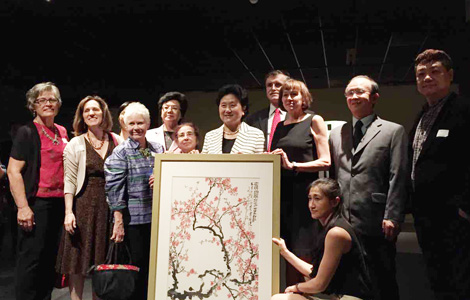
 Liu visits Houston Museum of Natural Science
Liu visits Houston Museum of Natural Science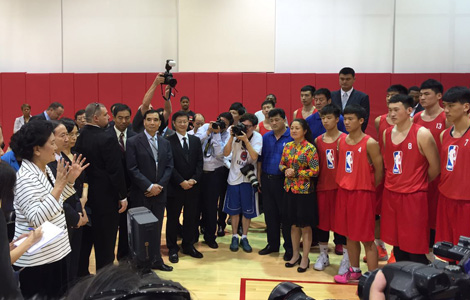
 Liu meets Tsinghua Youth team in Houston
Liu meets Tsinghua Youth team in Houston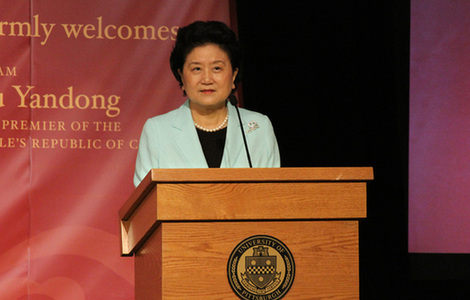
 Liu visits CI in Pittsburgh
Liu visits CI in Pittsburgh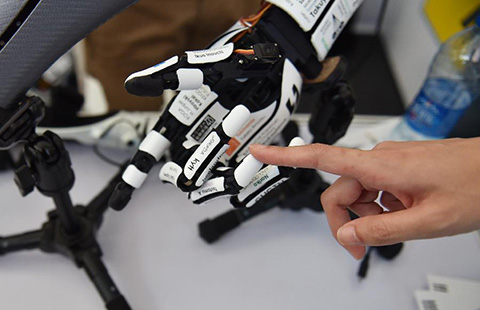
 Shenzhen Maker Week kicks off
Shenzhen Maker Week kicks off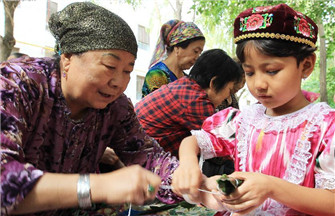
 Chinese wrap up Zongzi to mark upcoming Dragon Boat Festival
Chinese wrap up Zongzi to mark upcoming Dragon Boat Festival
 A Chinese Garden in a Sister City
A Chinese Garden in a Sister City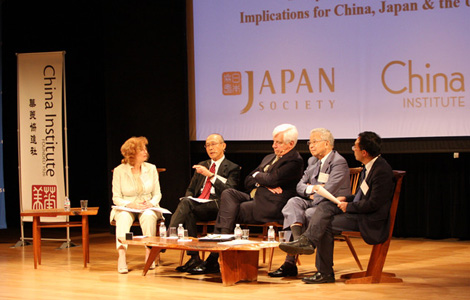
 Across America over the week (June 12-18)
Across America over the week (June 12-18)
 Liu meets Intel CEO
Liu meets Intel CEO
Most Viewed
Editor's Picks

|

|

|

|

|

|
Today's Top News
Liu plays basketball diplomacy
Wang Yang hails S&ED
Tsinghua students flying high
Chinese Premier emboldens state firms' int'l industrial cooperation
CI in Pittsburgh welcomes
vice-premier
Sichuan and Pittsburgh unveil
new school
Russia, China do not form blocs against anyone: Putin
More than 'greet'
and 'meet'
US Weekly

|

|






